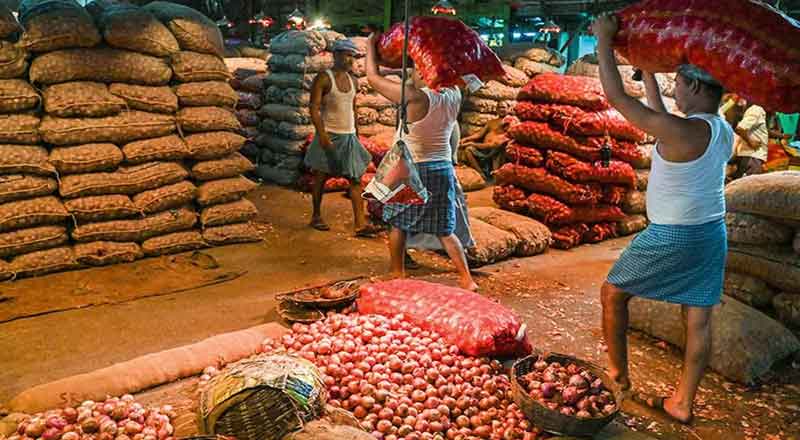- India’s onion exports have witnessed a significant upsurge, surpassing 45,000 tonnes since the recent lifting of the ban on outbound shipments earlier this month.
- The ban, imposed last December and extended in March due to rising prices caused by sluggish production, had put a strain on farmers’ incomes.
- This surge in exports underscores India’s capacity as the world’s biggest vegetable exporter and highlights the resilience of its agricultural sector in responding to market dynamics.
- To ensure the affordability of onions during the election period, the government lifted the ban on May 4 but imposed a minimum export price (MEP) of $550 per tonne.
India’s onion exports have witnessed a significant upsurge, surpassing 45,000 tonnes since the recent lifting of the ban on outbound shipments earlier this month, announced a top government official on Wednesday. This surge in exports comes as a welcome relief for farmers who had faced restrictions aimed at stabilizing domestic supplies, particularly in anticipation of the general elections.
The ban, initially imposed last December and extended in March due to rising prices caused by sluggish production, had put a strain on farmers’ incomes and exacerbated concerns over food security. However, with the ban lifted, farmers have been able to capitalize on international demand, bolstering their earnings and alleviating financial pressures.
Nidhi Khare, Secretary of the Consumer Affairs Ministry, disclosed that the majority of the exported onions were destined for markets in the Middle East and Bangladesh, indicating a resurgence in India’s presence as a key player in the global vegetable trade. This surge in exports not only underscores India’s capacity as the world’s biggest vegetable exporter but also highlights the resilience of its agricultural sector in responding to market dynamics.
To ensure the affordability of onions during the election period, the government lifted the ban on May 4 but imposed a minimum export price (MEP) of $550 per tonne. This move aimed to strike a balance between supporting farmers’ interests and maintaining stability in domestic prices, thus mitigating the risk of inflationary pressures on consumers.
Khare also highlighted the positive outlook for the upcoming monsoon season, which is expected to facilitate better sowing of kharif (summer) crops, including onions, starting from June onwards. Additionally, state-owned agencies have initiated procurement of onions from the recent rabi (winter) harvest to build a targeted buffer stock of 500,000 tonnes for the current year, ensuring stability in supply and prices.
However, despite these measures, the Agriculture Ministry’s first estimates indicate a projected 16% decline in onion production to 25.47 million tonnes for the 2023-24 crop year. This decrease is attributed to lower output in key growing regions such as Maharashtra, Karnataka, and Andhra Pradesh, underscoring the ongoing challenges faced by the agricultural sector.
In conclusion, while the surge in onion exports offers a glimmer of hope for farmers and reflects India’s resilience in global trade, challenges persist in ensuring sustainable agricultural productivity and addressing the needs of farmers amidst fluctuating market conditions.
(With inputs from agencies)





